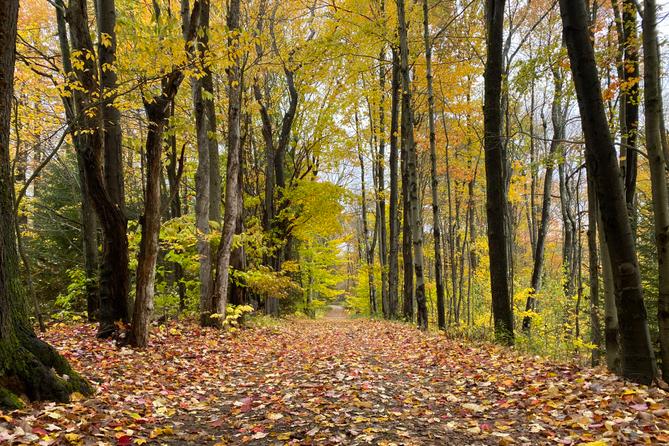This story first appeared in PA Local, a weekly newsletter by Spotlight PA taking a fresh, positive look at the incredible people, beautiful places, and delicious food of Pennsylvania. Sign up for free here.
Marlin Bressi has an affinity for stories of the strange-but-true variety, and he’ll tell you there’s no better place to dig for them than Pennsylvania. His latest favorite involves a Civil War veteran whose ventriloquist act intrigued and unsettled lumber workers around the state in the late 1800s: "Everybody loves this story," he told PA Local.
Bressi, a 42-year-old Harrisburg resident, is the author of the book series Pennsylvania Oddities and its corresponding blog. He also hosts a bimonthly podcast of the same name that chronicles quirky lore about the Keystone state: unsolved mysteries, local superstitions, ghost stories, and more. Earlier this month, he spoke at the Cameron County Historical Society, where he regaled attendees with his puppeteer story and others.
Ahead of that event, he told PA Local the tale. James H. Sharp "went by the name Peter Hauntz — that's what he was more famously known as," Bressi said. "He was based in Clinton County, so he traveled through that west-central Pennsylvania region.” Sharp would visit lumber camps in the region, where he performed his act with puppets whose astounding detail raised eyebrows.
“There are just so many legends around him,” Bressi said, diving into the subject with the palpable enthusiasm he brings to his podcasts and presentations. "Like they said he carved puppets so lifelike that to this day people don't know if they were puppets or actual people.
"He started out just after the Civil War, and bought a used horse-drawn hearse for a wagon. He went from town to town as a one-man show. And one day, he showed up with a female puppet whose name was Herodia. Everybody thought it was a puppet, but it may have been an actual human being. Rumors began to circulate that it was actually his daughter dressed up as a puppet. Then one day, Herodia disappeared — and nobody really knows what happened to her."
Out of the hundreds of puppets Sharp carved, Bressi said, only one is still around. "A few years back, somebody found it in an antique store, up in Clinton County, I believe. It was a creepy-looking puppet. And it turned out it was an original made by Sharp. As far as anybody knows, that's the only one that is known to exist," he said, pausing for dramatic effect.
Bressi's interest in odd Pennsylvania history dates back to his childhood home, where strange events happened on a regular basis. "I think what really started it for me was growing up in a house that was pretty haunted," he said.
The house was an old dwelling in a small mining town with "one stoplight, probably less than 1,000 people.” Almost every night in the house for about two years, he said, there was spooky activity: "TVs would turn on by themselves, doors would slam shut, the blinds would open and close by themselves. And pictures … they would literally fly off the wall." Bressi, unflappable even as a child, was more fascinated than fazed: "I just assumed everybody had a house like that!"
As he got older, he grew interested in the house’s backstory. "The more I got into the historical research, it turned out that as much as I liked the paranormal stuff, I really enjoy history in general. Especially from the 19th century and early 20th century. That's the bulk of the stories I write for my blog, and for the podcast."
Despite his trove of knowledge, Bressi says he's not the best guy to invite along on a tour of a haunted place. "To be honest, I'm a nerd when it comes to history, and when you go on these ghost tours, a lot of it is sensationalized … I can't bite my tongue when someone says something that's historically inaccurate."
He maintains Pennsylvania is the "spookiest state" when it comes to sheer volume of hair-raising lore. He suspects this has to do with the diverse blend of cultures throughout the state’s history, dating back to the original, Indigenous population and the ensuing influx of cultures in the colonial era.
"My great-grandparents came over from Italy to work in a coal mine. There were a lot of Italians, Irish, Lithuanians, Polish, people from all over the world coming to the Coal Region of Pennsylvania to look for a job. So there's all this history and all these cultures, all these different languages and backgrounds and religious beliefs. You go a little further south and you have the Amish and the Pennsylvania Dutch. And everything kind of meshes together. You can't help but have a lot of neat history."
Apparently, certain counties have a higher volume of spooky stories. "Berks and Schuylkill counties, for some reason, definitely have more legends and more ghost stories. And my theory is that these are Pennsylvania Dutch counties, settled by the Germans, and Germans do tend to be a little more superstitious."
Much of Bressi’s research is conducted in the newspaper archives of town libraries, but the increasing popularity of his podcast and books has created another avenue for story ideas. "Every day I check my email and people are like, 'You should write about this!' So that really saves me a lot of time."
As much attention as he devotes to it, though, chronicling odd Pennsylvania remains a hobby for Bressi rather than a profession. "For 23 years, I've been a hairstylist," he says. "This is just what I do to unwind."
BEFORE YOU GO… If you learned something from this article, pay it forward and contribute to Spotlight PA at spotlightpa.org/donate. Spotlight PA is funded by foundations and readers like you who are committed to accountability journalism that gets results.

